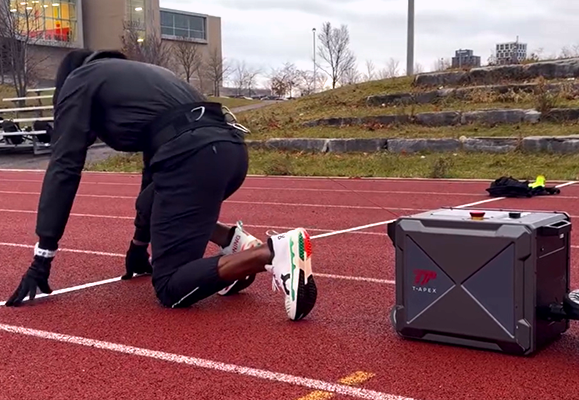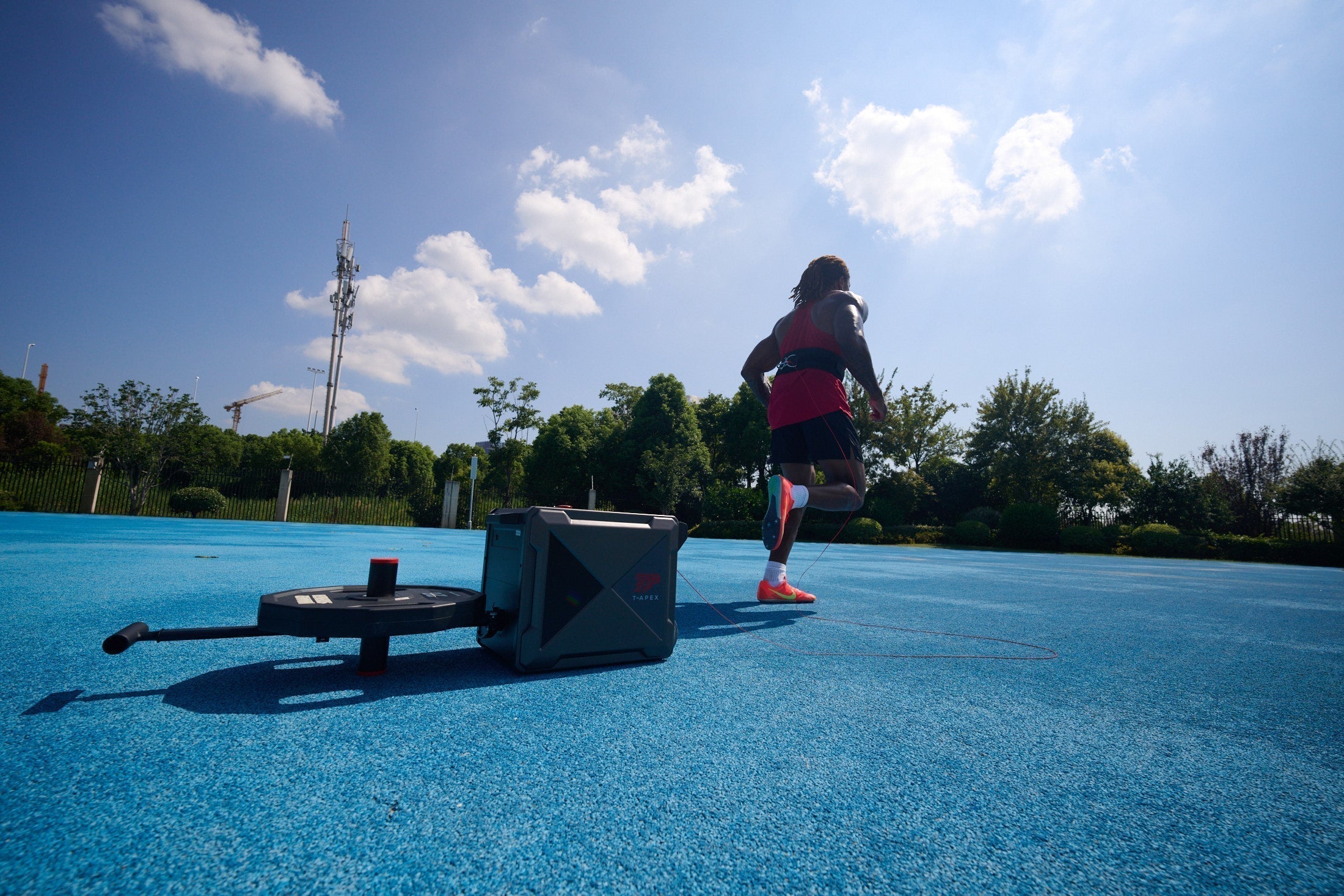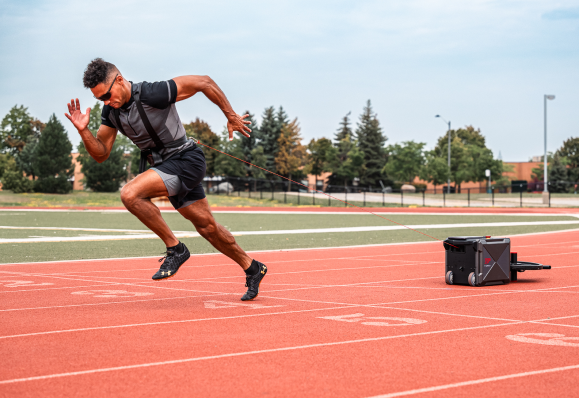What Is Resistance Mode?
Resistance Mode offers single-directional resistance, ideal for sprint-based drills and power development. You can customize resistance levels to simulate different sprint conditions and monitor your speed and force output in real time.
Athletes and coaches commonly use Resistance Mode for:
-
Start technique development
-
Acceleration work
-
Top-speed retention
-
Speed testing under light tension
To maintain cable engagement and ensure accurate data capture, we recommend setting the resistance to at least 3 kgf during testing.
Key Parameters in Resistance Mode
On the T-APEX interface, you can customize several core settings:
-
Training Distance (optional) Set the sprint distance to define the length of data capture. Range: 0–100 meters.
-
Resistance The initial load applied throughout the sprint. Range: 0–20 kgf.
-
Recspeed (Recovery Speed) Determines how quickly the cable rewinds after each drill. Range: 0–7 m/s. Default is 1 m/s for safety; adjust it based on your workflow needs.
-
Advanced Settings Program dynamic resistance changes based on sprint velocity.

Advanced Resistance Control (Vchange & Rchange)
For advanced athletes and speed coaches, Resistance Mode includes programmable resistance drop settings to better simulate force demands during a full sprint.
How It Works:
-
Vchange (Velocity Change): The sprint speed (m/s) at which resistance should drop.
-
Rchange (Resistance Change): The new resistance value (kgf) applied once the athlete reaches the target speed.
💡 Example: Load = 10 kgf, Vchange = 6.5 m/s, Rchange = 3 kgf 👉 Resistance drops from 10 to 3 kgf once the athlete hits 6.5 m/s.
The system applies 10 kgf of resistance until the athlete reaches 6.5 m/s. At that point, it automatically reduces the load to 3 kgf, allowing for a smooth transition into top-speed mechanics.
You can also set resistance changes by distance:
-
Dchange: The distance (m) after which the load should change.
-
Rchange: The new resistance (kgf) once that distance is reached.
💡 Example: Load = 12 kgf, Dchange = 15m, R2 = 4 kgf 👉 Load shifts to 4 kgf once the athlete crosses 15 meters.
Tip: Set Vchange to 0 to disable dynamic load changes and maintain a constant resistance throughout the sprint.

Who Should Use Resistance Mode?
Resistance Mode is ideal for athletes in sports that demand powerful starts and high-speed phases, including:
-
Track & Field sprinters
-
Football / Soccer players
-
Ice Hockey players
-
Baseball & Softball athletes
-
Rugby / Lacrosse players
Final Thoughts
Resistance Mode on T-APEX equips you with the tools to build foundational speed, refine technique, and enhance power output—one sprint at a time. With programmable resistance shifts, you can train smarter, adapt faster, and compete stronger.
Ready to power up your sprint training? Try T-APEX today.


